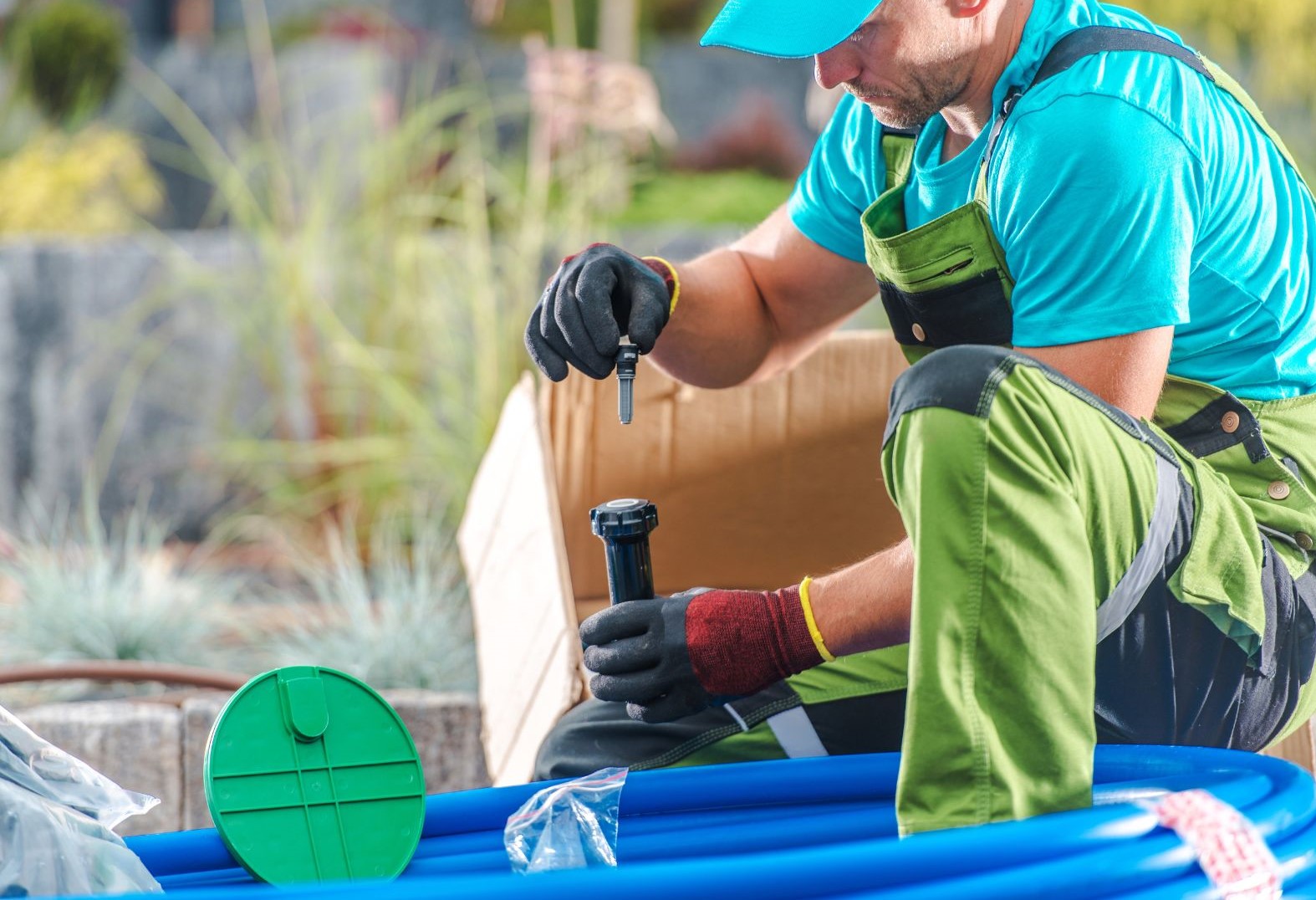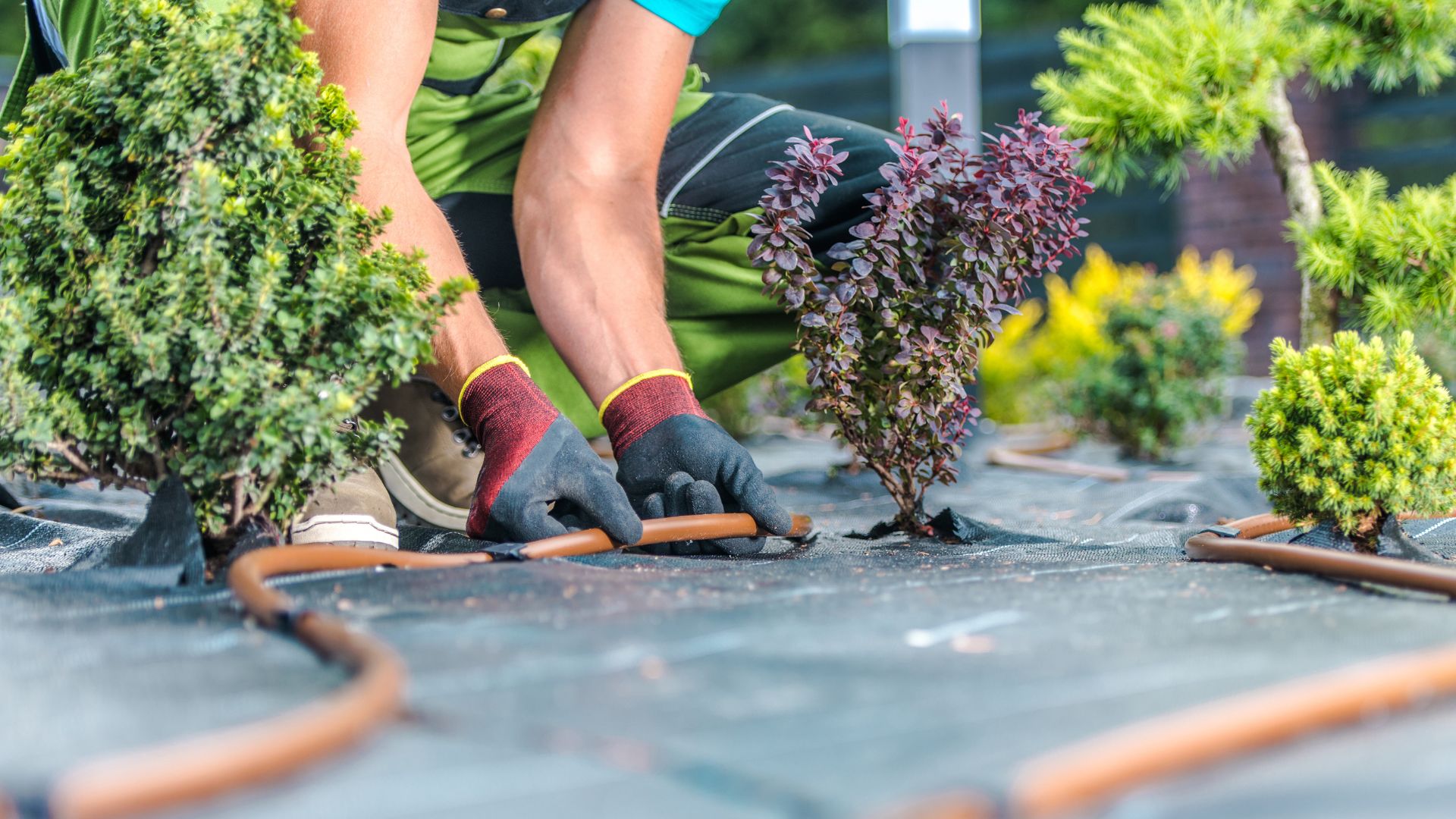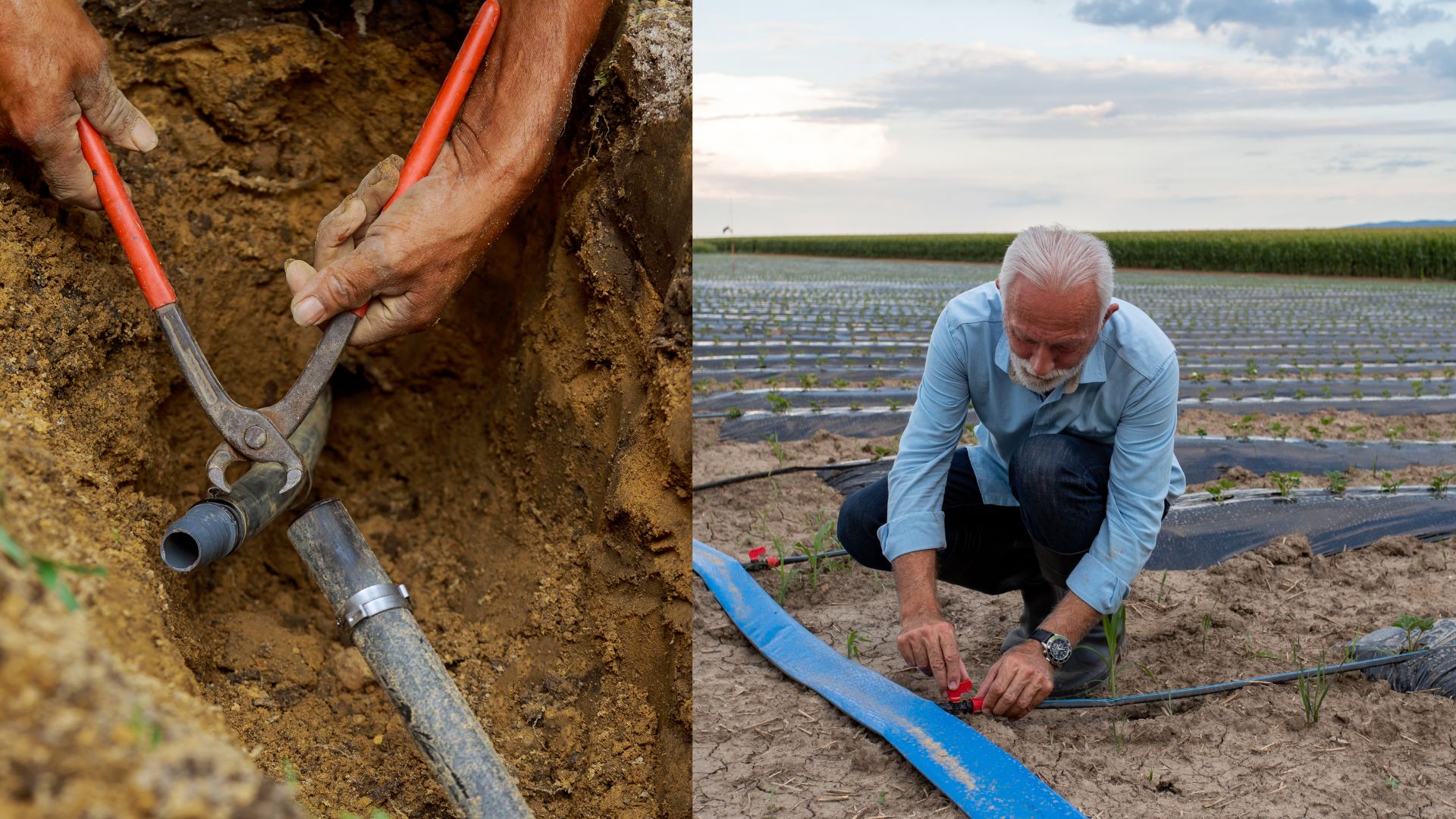Best Practices for Irrigation System Maintenance and Repair

This post is also available in:
This post is also available in:
![]() Français (French)
Français (French)
Irrigation systems are significant investments in keeping crops, lawns, and gardens healthy and vigorous. However, these systems require regular maintenance and repair to work efficiently and effectively. Neglecting routine maintenance and repair can lead to costly water waste, damage to the farm/landscape, and higher utility bills.
A well-maintained and properly functioning irrigation system can significantly affect the health and appearance of lawns, gardens, and crops. Routine maintenance includes cleaning and inspecting sprinkler/emitter heads, checking water pressure, and monitoring water usage. These actions can prevent potential problems before they lead to major damage or wasted water. Repairs and fixes may also be occasionally necessary, including addressing leaks or malfunctioning valves.

Pre-Season Start-Up
It is essential to prepare the irrigation system before the irrigation season. This involves checking the entire system for leaks and damages, cleaning and adjusting the sprinkler/emitter heads, and ensuring the water supply is turned on gradually to avoid damage from high-pressure water rushing through the pipes.
Professional assistance for repairing your irrigation system
While some irrigation issues can be addressed through do-it-yourself (DIY) tasks, more complicated repairs and maintenance require professional assistance. Irrigation professionals have the necessary skills, knowledge, and equipment to diagnose and fix irrigation system problems quickly and efficiently.
Routine Maintenance and Inspection of the irrigation system
Regular maintenance and inspection of the irrigation system can help prevent small problems from turning into big ones. These routine tasks should be done at least once per season (spring, summer, and fall).
- Clean and inspect sprinkler/emitter heads: Dirty or damaged sprinkler/emitter heads can lead to irregular watering patterns and water waste. Check each sprinkler/emitter head for clogs, damage, or uneven spray patterns. Clean or replace the heads as needed.
- Check and adjust water pressure: High water pressure can cause damage or leaks to the irrigation system. Use a pressure gauge to measure the water pressure and make necessary adjustments.
- Inspect on/off and non-return valves: On/off and non-return valves are critical components of the irrigation system. Check for leaks or damage and ensure they are working correctly.
- Monitor water usage: Keep track of water usage to identify any spikes or unusual patterns. This can help pinpoint potential problems before they result in major damage or wasted water.
- Clean filters: Filters prevent debris and other materials from entering and damaging the irrigation system. Blocked filters may hinder water flow, and faulty fitters may block sprinklers/emitters. Clean filters regularly and replace them as needed.
Repairs and Fixes of the Ιrrigation System
Even with proper maintenance, irrigation systems can develop issues that require repair.
- Leaks: Leaks are a common issue with irrigation systems and can result in significant water waste and farm/landscape damage. If you detect a leak, turn off the water supply and contact a professional to fix it.
- Broken or damaged sprinkler/emitter heads: Wear and tear can cause sprinkler/emitter heads to break or become damaged. Replace the heads as needed to ensure even and efficient watering.
- Malfunctioning valves: Malfunctioning valves can lead to over-watering or under-watering. Professional assistance may be necessary to fix valve issues.
- Clogged or damaged pipes: Debris or damage can cause pipes to become clogged or ineffective, leading to uneven watering or complete system failure. A professional technician can diagnose and repair pipe issues.
- Controller malfunction: An irrigation system controller provides instructions to the system and can malfunction, resulting in over-watering or under-watering. Check the battery in the controller, reset the system, or replace the controller if necessary.
Winterizing the Irrigation System – Protect your irrigation system from freezing during winter.
Irrigation system winterization is the process of preparing and protecting an irrigation system from potential damage caused by freezing temperatures during the winter season. In some regions, winterizing the irrigation system is critical to prevent damage to pipes and equipment.
- Turn off the water supply: Turn off the main water supply to the irrigation system and open the drain valve to allow any remaining water to drain out.
- Remove water from pipes: Use an air compressor to blow out any remaining water from the irrigation system pipes.
- Insulate exposed pipes: Cover any exposed pipes with insulation to prevent damage from freezing temperatures.
- Cover exposed valves: This is to protect them from winter winds, cold, and debris.
- Store equipment: Store sprinkler heads, valves, and other equipment indoors to protect them from winter weather.
System Upgrade
When maintenance and repairs are no longer sufficient and effective, upgrading the irrigation system could be the best solution. An irrigation system upgrade might be necessary due to changes in water pressure and usage or a need for increased water efficiency. A system over 20 years old may no longer meet today’s water conservation standards or may have outdated technology compared to newer systems.
Upgrading the irrigation system could also be an excellent opportunity to incorporate technology that is more sustainable and better suited to the farm/landscape not only for reducing water consumption but also for reducing maintenance costs.
- Improve water efficiency: An irrigation system upgrade can significantly reduce water consumption while maintaining healthy plants. Newer technologies in irrigation help manage soil moisture more accurately, which allows plants to absorb more water and reduces the need for additional irrigation.
- Enhanced farm/garden/landscape aesthetics: An upgraded irrigation system can improve the overall appearance of a farm/garden/landscape. An updated system can achieve a more consistent watering pattern, with no over-watering or under-watering, leading to more uniform and healthier plant growth.
- Saves money in the long run: While there is an initial upfront cost to upgrading an irrigation system, it is a worthwhile investment. Upgraded systems reduce maintenance costs in the long run for a smoother-running and more efficient system. The upgrade also enables farmers to use water more efficiently, ultimately resulting in lower water bills.
- Better control and custom system capabilities: Newer irrigation systems have smart controllers that allow farmers to remotely manage their irrigation systems from anywhere through smart devices like smartphones, tablets, and computers. Smart controllers also allow the customization of the irrigation schedule, irrigation duration, and even which zones require additional watering. Customization works especially well for landscapes with plants that have different water requirements.
- Greater ease of maintenance: Newer systems are assembled using durable components and materials, which ensure long-term reliability and minimal maintenance. With such system durability, farmers can go for months without requiring repair work. These systems also require little maintenance since they self-diagnose issues before they become bigger.
Further reading
Factors to Consider When Selecting an Irrigation System
Types of Irrigation Systems – Which to choose depending on your needs
Irrigation Management – How to Optimize Irrigation Efficiency
Best Practices for Irrigation System Maintenance and Repair
References
- https://digitalcommons.usu.edu/cgi/viewcontent.cgi?article=1149&context=extension_histall
- https://academicjournals.org/journal/IJWREE/article-full-text/A557E9051547
- https://books.google.fr/
- https://www.researchgate.net/
- https://ageconsearch.umn.edu/record/230564/
- https://itc.tamu.edu/files/2018/05/MF2178.pdf
- https://books.google.fr/
- https://link.springer.com/article/10.1007/s42452-020-03226-8
- https://wocatpedia.net/images/d/d7/GIZ,_Huppert,_W.,_Hagen,_C._(1999)_Maintenance_as_a_Service_Provision_in_Irrigation.pdf
- https://www.fao.org/3/I7090EN/i7090en.pdf









































































